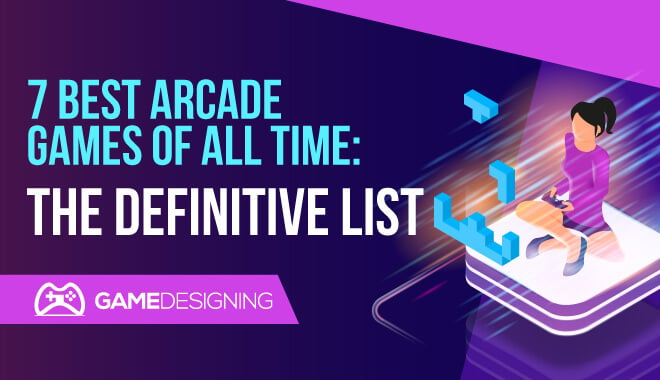
Before home gaming consoles and PCs kept gamers playing in the comfort of their own homes, there used to be long nights by the arcade cabinet.
Pouring quarter after quarter in, see if you could beat your friend’s high score; it was all exhilarating.
Not only was the experience one of a kind, but the games you could play were unlike anything players had seen up to that point.
History, The First Arcade Game, and Atari
Before the golden age of arcade gaming, students at Stanford University rigged a machine to accept coins to play the game SpaceWar.
SpaceWar itself was considered one of the first video games, having been developed and released in 1962 by Steve Russell, Martin Graetz, and Wayne Wiitanen at MIT. The students at Stanford set up this machine with SpaceWar in 1971.
Soon thereafter, a pioneer in arcade gaming would emerge.
Nolan Bushnell, a game developer, formed the iconic Atari in 1972, opening the doors to the gaming golden age. Atari would become famous with the release of Pong, considered to be a high watermark in gaming history.
Games like Pong and Spacewar were set up in gaming cabinets; large compartments in which the electronic components of the game would reside.
These cabinets and coin-operated machines would be found in malls, pizza parlors, and other social gathering spots in the late 1970s into the modern day.
Why Do They Still Thrive?
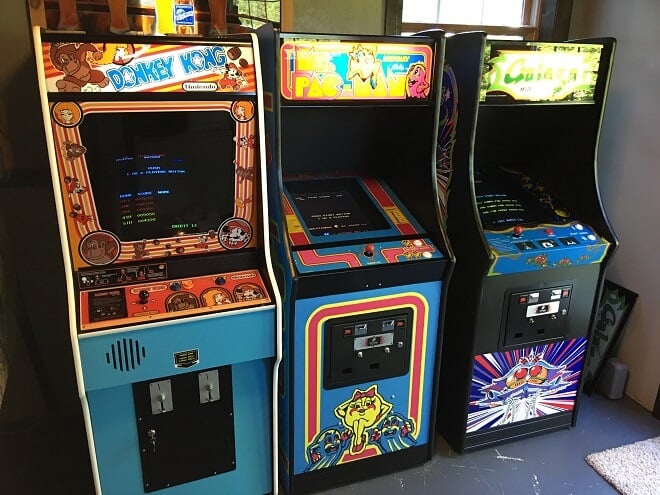
Arcade gaming has experienced ups and downs throughout the years, possibly more than any other video gaming medium.
They nevertheless survived the flow of time. How do arcade games still thrive in today’s world in which a gamer can virtually have any game at their fingertips?
For many, it is a unique experience that they can’t get at home. The atmosphere, sounds, and social aspects all appeal in some way. Furthermore, certain games are better designed for the arcade control scheme and environment.
With the rise of gaming tournaments, fighting games have found their home with arcade-gaming lovers. This is primarily due to the release of Street Fighter II. But more on that later on.
Arcades have been through so much, and some of their games have defined the world of video games, influencing countless games to come. Here are the best…
Our Ranking Criteria
In addition to player and critic ratings, we use objective metrics like sales, users, and sales growth rate to make our lists (read more). Some of these data sources include:
Best Arcade Games of All Times
Street Fighter II
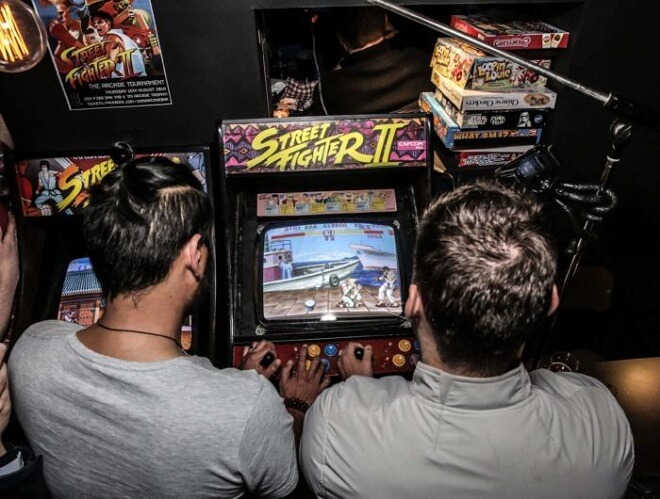
Capcom | 1991 | Fighting
No one remembers the first Street Fighter, which is fine. The sequel, released in 1991, is where this franchise shines. Along with colorful characters, tight controls, and a killer soundtrack, Street Fighter II defined fighting games. The second game in the series was released and rereleased an obscene amount of times; remasters of remasters.
If you have ever played the game, you will immediately understand why the game has such longevity. Just pick a unique character like the Brazilian Blanka and go to town on your opponents and I dare you to try and turn it off. You can’t!
Add this to the arcade environment where people crowd around the Street Fighter II cabinet, challenging foes, placing bets, and earning bragging rights.
The series is fully modernized now, with its latest iteration appearing in the form of 2016’s Street Fighter V for arcade, PS4, and PC. While it was favorably received, Capcom released an updated version, Street Fighter V: Arcade Edition, in 2018.
People enjoyed this update as it updated things like the user interface and gaming modes.
What Makes It Great
Evolutionary Gameplay: Street Fighter II is not just a sequel but a massive improvement over its predecessor. It transitioned from a single-player tournament experience to a game designed with two-player combat in mind, making it a more engaging and social experience.
Diverse Character Roster: The game introduced an expanded roster of playable characters, each with their own unique backstory and abilities. This diversity allowed players to find a character that resonated with them and master their specific moves.
Multiple Iterations and Enhancements: Over the years, several versions of Street Fighter II were released, each bringing new features, characters, and gameplay mechanics. This kept the game fresh and allowed it to evolve with the changing demands of its audience.
Difficulty
When played in single-player mode, the game presents a progressively increasing challenge, but mastering its mechanics is achievable with patience and practice. However, the true essence of the game shines in multiplayer, where the dynamics can vary widely based on the skills of the opposing player.
Pac-Man
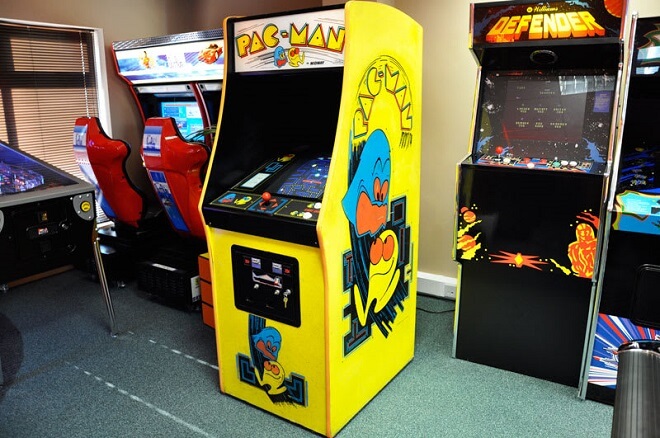
Namco | 1980 | Maze
If you were a gamer in 1980, you were about to have one of the most important moments in gaming unfold right before your eyes. With Namco’s release of Pac-Man, arcade gaming experienced one of the biggest booms it would ever see.
The game, where the player controls the titular little yellow circle, Pac-Man, was a face-paced maze adventure. The player needs to consume all of the dots all over the maze while avoiding the different colored ghosts: Inky, Blinky, Pinky & Clyde.
Level after level has you avoiding these cutesy foes, and it can get pretty frantic. Pac-Man can activate the energy dots which turn the ghosts blue, allowing Pac-Man to eat the ghosts, scoring even more points.
This is a classic game where people battled relentlessly over high scores. Over the years, Pac-Man has found its way to many different platforms. I remember playing a browser version in middle school during study hall. I blame Pac-man for my terrible Algebra grades!
The interesting fact about Pac-man is that it was never designed to end. That’s right: no end.
Why We Like It
As one of the most iconic arcade games of all time, Pacman remains a favorite among players of all ages including ours. The simple gameplay and charming characters have captivated players since it was first introduced in the early 1980s. There are several reasons for its enduring popularity.
For starters, the game’s concept is easily understood by both casual and hardcore gamers. It’s straightforward, but challenging enough to keep players engaged as they guide Pacman through a maze while avoiding ghosts. Its graphics and sound effects are also extremely appealing, making it a timeless game. There is no denying the game’s impact on modern gaming.
Pacman paved the way for future arcade classics and established many conventions still used in game design today. Its success inspired countless sequels, spin-offs, and even an animated television series. Pacman’s enduring popularity is a testament to its ability to transcend generations and provide joy and entertainment to players worldwide.
You could theoretically just keep going until you lost all your lives. This has caused fierce competition, with people vying for the ‘perfect’ Pac-Man game, where one must not lose any lives while making it through 255 levels.
The 256th level is a glitch, called the split-screen. It is the result of a bug in the system, and if one beats the 256th level, one would be counted among the skilled few to achieve this feat.
Player Billy Mitchell would be the first to accomplish this insane challenge, scoring 3,333,360 points in around 6 hours. The challenges to one-up other players have kept Pac-Man and its other variations on top of the heap in arcades.
What Makes It Great
Historical Significance: Released in 1980, Pac-Man played a pivotal role in popularizing gaming, becoming an arcade sensation and one of the most recognizable games ever.
Nostalgic Influence: For many, Pac-Man evokes strong feelings of nostalgia, reminding them of the early days of gaming and the arcades of yesteryears.
Enduring Formula: Despite its age and simplicity, the core gameplay of trying to maximize scores by eating pellets, fruit, and ghosts remains entertaining for short bursts, showcasing its timeless appeal.
Difficulty
Pac-Man starts off straightforward, offering a simple maze-chasing experience, but as levels progress, the speed of the ghosts increases and power pellets become less effective, demanding heightened reflexes and strategy from players.
This consistent ramp-up in challenge ensures that while the game may seem elementary at first, maintaining prolonged success becomes a test of skill and patience.
Space Invaders
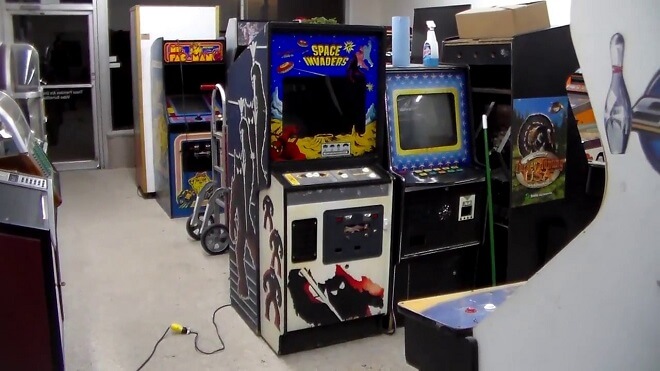
Taito | 1978 | Fixed Shooter
Even before Pac-Man, 1978 marked perhaps the biggest shakeup in gaming.
Space Invaders, developed by the Japanese company Taito, (and eventually Midway in the United States), is a graphically basic game in which the player is tasked with stopping the space invaders from reaching the bottom of the level.
You are a lone ship shooting up at a wall of enemies. The enemies increasingly pick up speed, adding a frantic, anxiety-driven form of gameplay that is a lot of fun. The enemies moving faster were the result of the computing powers of the developer.
While programming, the game designer noticed that the more enemies that were vanquished, the faster the remaining enemies would move. At first, he thought he should fix this, but ultimately decided to keep it in the final game, adding to its legacy.
Even before 1980, this game sold extremely well. In Japan, Space Invaders made over $600 million and earned the equivalent of $1.7 billion by 1982. Today it is the highest-grossing game of all time, with profits of $13 billion between all of its versions.
What sets it apart from many games of its ilk is its simple yet addictive gameplay. You can just pick up and play and lose yourself in fast-paced gameplay.
What Makes It Great
Historical Significance: “Space Invaders” was groundbreaking in 1978, setting the stage for the shoot-em-up genre and becoming a cornerstone in the world of gaming.
Classic Gameplay: The game’s mechanics are simple yet engaging, tasking players with guiding a cannon to eliminate rows of descending aliens. Its straightforwardness offers a nostalgic experience for those familiar with the original arcade version.
Variety of Modes: Players can experience the game in different visual styles, from the detailed background of the upright cabinet screen to the classic black-and-white mode, offering a touch of authenticity to its arcade roots.
Difficulty
The game’s difficulty increases progressively as the aliens shift formation and speed up upon each successful elimination. With the constant threat of the invaders reaching the bottom of the screen and the occasional appearance of a rewarding “mystery ship,” players must maintain precision and agility to master this timeless arcade classic.
Donkey Kong
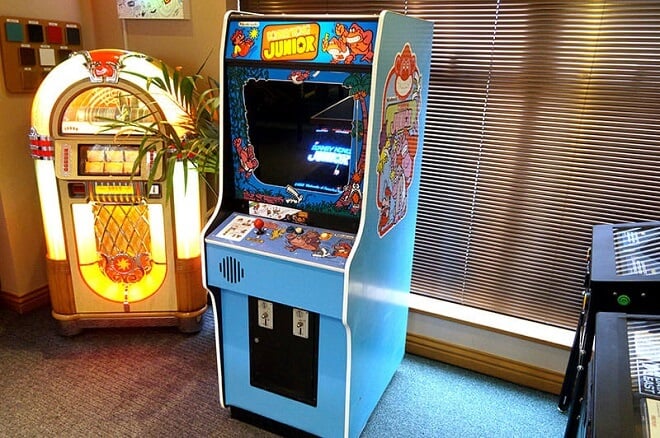
Nintendo R&D1 Ikegami Tsushink | 1981 | Platform
This entry is significant for the fact that it is the first appearance of Mario, but it is also a great game in its own right. You play as ‘Jumpman’, (later to be our favorite Italian plumber), on a quest to the top of a twisted tower of girders to rescue the princess from the evil Donkey Kong.
It is strange to think of the lovable Donkey Kong as we know him today as the main antagonist of a game, but he was there at the top throwing barrels in our way. The player needs to dodge multiple obstacles to beat the level, testing, hand-eye coordination, and endurance.
This was the first design effort by Shigeru Miyamoto, eventually becoming the mythical figurehead of Nintendo in years to come. Miyamoto’s colorful and humorous designs paid off: the game was a smash hit, absolutely killing it in the North American market.
An aspect that helped Donkey Kong stay so relevant wasn’t only its cast of characters that would go on to define the platforming genre, but its great sales of the game for home consoles. This helped the game receive new longevity outside of the arcade market.
I remember playing it on my Nintendo Entertainment System when I was 5 and devouring it, (all while being petrified of the goofy monkey trying to stop me in my tracks).
Not only is this a solid game, but it proved to be an important game for Nintendo, as it spawned several well-known characters that would go on to star in award-winning franchises.
Shigeru Miyamoto strikes again!
What Makes It Great
Innovative Expansion: While rooted in the 1981 arcade classic, this Game Boy version brilliantly expands the original into a long-lasting adventure, boasting some of Nintendo’s most ingenious level designs and satisfying gameplay.
Diverse Environments and Challenges: Beyond the iconic construction site, players chase Donkey Kong through varied settings like jungles, icebergs, pirate ships, and more. The game also introduces a mix of platforming and puzzling stages, requiring players to think strategically to progress.
Evolution of Gameplay: The game starts with a homage to the original arcade levels but quickly evolves. Donkey Kong doesn’t just settle after being defeated in the initial stages; he leads Mario on a 100+ stage journey, offering players a rich and extended gameplay experience.
Difficulty
The escalating difficulty as the game progresses, including faster enemy movements and changing level layouts, keeps players engaged and on their toes, making Donkey Kong a formidable and rewarding gaming experience of its era.
Dragon’s Lair
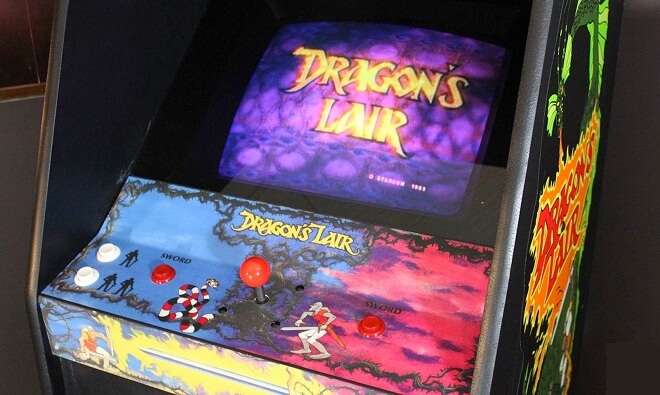
RDI Video Systems | 1983 | Fantasy
Those familiar with the films of Don Bluth, (The Secret of NIMH, The Land Before Time, All Dogs Go to Heaven), will immediately recognize the great cartoon animation involved in the hit game Dragon’s Lair.
Don Bluth himself was involved with the production of the game, which was released in 1983. Those of you who are familiar with quick-time events, (QTEs), will see where they came from.
Dragon’s Lair puts you in the role of a knight in search of the abducted princess from the dragon’s lair. The player is treated to some beautiful cutscenes as they choose which path the knight takes on his harrowing journey.
This game is known for its humorous death sequences, which many gamers became intimately acquainted with; this game is HARD. You need to have lightning-quick reflexes to react to what is happening on the screen, pressing the right button, and choosing the right path.
It was the first game to use QTEs and was an interactive movie laserdisc.
Dragon’s Lair also breathed new life into the arcade industry. In 1983, the arcade industry was in dire straits; they were experiencing the infamous video game crash due to severe market saturation and other contributing factors.
Many companies went bust and it wasn’t looking good for video games as a whole.
Dragon’s Lair jumped onto the scene and revitalized a threatened industry. It would win accolades like the number 7 spot on GameSpy’s Top 50 Arcade Games of All-Time list. It’s no easy feat trying to save a dying industry, but the game surely helped bring us back.
Thanks, Dragon’s Lair!
What Makes It Great
Quick-Time Events (QTEs) Pioneer: Long before games like “Heavy Rain” popularized the QTE gameplay mechanic, “Dragon’s Lair” was one of the first to rely entirely on it, offering a unique gameplay experience where players responded to on-screen prompts.
Historical Significance: Released during a tumultuous time for the gaming industry, “Dragon’s Lair” provided a beacon of hope and innovation, showcasing what games could potentially offer in terms of visual appeal and interactive storytelling.
Nostalgic Appeal: While its gameplay might seem simplistic by today’s standards, “Dragon’s Lair” holds a special place in gaming history, offering a nostalgic trip for those who experienced its original charm in arcades.
Difficulty
This game’s difficulty lies not in complex controls or intricate gameplay mechanics, but rather in the player’s ability to execute precise reactions to on-screen prompts. With just five controls – up, down, left, right, and attack – the challenge is centered on timing and precision as players navigate a series of quick time events
The House of the Dead
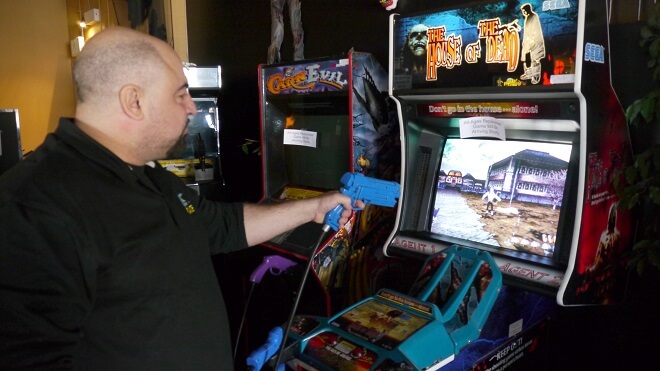
Sega | 1996 | Horror
This game terrified me. I first played it at the movie theater before a showing of Star Wars: The Phantom Menace. My excitement for the movie faded as I saw the crazy images on screen: fast-paced gunplay involving bloody zombies.
With gory images, ghouls, and zombies, The House of the Dead, Sega’s 1996 release was an instant classic. It is an on-rails shooter, putting the player in the shoes of one of two protagonists, Rogan and ‘G’. Much like Resident Evil, they must stop evil scientists, all while blasting through the army of the dead.
Players use light guns, (controllers shaped like guns), to progress through the story while aiming and shooting at enemies. These enemies were unlike any we’ve seen before: fast-running zombies. Of course, by now we are more familiar with this terrifying concept.
But before this, gamers only knew George Romero’s lumbering, slow zombies. This added a high-octane, adrenaline-filled style of play that many gamers would go crazy over.
The game offered three different endings, all based on how the player(s) performed in-game. This game has easily stood the test of time merely by staying relevant. It has had several sequels, and my personal favorite, Typing of the Dead.
No joke, Typing of the Dead has you kill enemies by completing typing segments, rather than light guns. It sounds ridiculous, but it makes it even scarier along with giving your brain some exercise.
Along with its relevancy is its solid gameplay. It’s a ton of fun to partner up and grab a light gun, blasting through the undead horde.
What Makes It Great
Pioneering Horror Gameplay: “The House of the Dead” is a horror-themed light gun shooter video game franchise that set the standard for arcade-style shooting games. Its unique blend of horror elements with fast-paced shooting action made it stand out in the gaming world.
Dynamic Gameplay Mechanics: The series offers diverse gameplay elements across its titles, from branching paths determined by player actions to unlockable bonuses and multiple endings based on performance. This ensures a fresh experience for players with each playthrough.
Evolution with Each Release: From its origins as a first-person light gun rail shooter, the series has introduced various gameplay mechanics, characters, and firearms, keeping the franchise fresh and engaging for players over the years.
Difficulty
The House of the Dead presents a moderate level of difficulty, requiring players to demonstrate accuracy and quick reflexes as they fend off waves of approaching zombies using a light gun or mouse. Managing limited ammunition, avoiding damage, and rescuing hostages for health power-ups are key aspects of the challenge.
Tetris
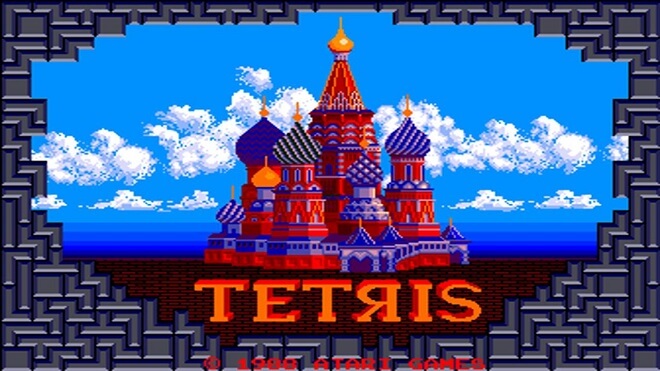
Alexey Pajitnov | 1985 | Puzzle
This comes as no surprise. Tetris, the Russian wonder, has captivated gamers of all ages since the mid-1980s when it was released. This tile-matching game developed by Russian computer engineer Alexey Pajitnov was an instant hit.
The game was the first game exported from the Soviet Union to the West, showing up in 1986.
This game supersedes all other puzzle games. It even has the infamous ‘Tetris effect’, in which players, long after completing games, for example, can hallucinate seeing the Tetris shapes when their eyes are closed. It also bleeds into other aspects of their lives, like dreams and thoughts. But don’t worry, it’s not a bad thing!
People love Tetris so much that it seeps into their very beings. What’s better than downloading Tetris to your phone or playing a quick game on your internet browser when you should be focusing on being productive? Okay, so maybe you should get your work done, but c’mon! It’s Tetris!
The game starts with a clear board. Then, slowly but surely, pieces of the puzzle come floating down. These come in the form of multiple shapes, (my favorite, naturally, being the straight line), and forming geometric blocks to keep the board clear.
It feels great to line up a bunch of blocks right when you think the screen will fill up, (ending in a game over) and see them burst, giving you a second lease on life. The more the player succeeds, the faster the puzzle pieces float down, giving the urgency that separates the hardcore players from the casual ones. Which are you?
Unfortunately for Alexey Pajitnov, he didn’t start seeing returns on his creation until well after a decade. He formed The Tetris Company and controlled much of his creation. I think we all owe Alexey a great debt.
Tetris, even today, continues to be a best-seller, particularly on mobile platforms, proving that it is one of the most revolutionary games ever created in history.
What Makes It Great
Unprecedented Popularity: By December 2011, Tetris had sold a staggering 202 million copies, making it one of the best-selling video game franchises. Its influence extends beyond gaming, impacting popular culture, architecture, music, and even scientific research.
Cultural Impact: Beyond its gameplay, Tetris has become a cultural icon. Its imagery has influenced various fields, and the game has been the subject of numerous studies analyzing its complexity and effects on the human brain, notably the “Tetris effect.”
Difficulty
Tetris is a deceptively simple yet increasingly challenging puzzle game that tests players’ spatial awareness and decision-making skills. As players manipulate falling tetrominoes to create complete horizontal lines, the game’s difficulty escalates with the accelerating speed of descent and the need for quick thinking.
Best Arcade Machines
- Creative Arcades Full-Size Cabinet Arcade Machine
- Arcade1UP Galaga Arcade Machine
- My Arcade Data East Classics Mini Player
- My Arcade Bubble Bobble Micro Player
- Chicago Gaming Arcade Legends 3
Arcade Genre
The ‘arcade’ genre is still used to describe different facets of action games. Some games have an ‘arcade’ mode, in which the levels are tailored to more action-packed, score-based gameplay than they usually would be.
Arcade Action Games
Of course, while there are arcade modes in some action games, there are still those arcade action games that paved the way for what it meant to play action games in the first place. Here are the top arcade games in the action genre.
- Pac-Man
- Space Invaders
- Asteroids
- Frogger
- Donkey Kong
- Pong
- Missile Command
- Galaga
- Ms. Pac-Man
List of Highest-Grossing Games
It’s no surprise that some of the highest-grossing games in the arcade were actually some of the first prevalent arcade games that hit the mainstream with a bang. You’ll find a lot of duplicates from the best action games.
- Pac-Man
- Space Invaders
- Street Fighter II
- NBA Jam
- Mortal Kombat II
Online Arcade Games
This arcade games list includes some online arcade games you can play.
- Lines and Blocks
- Wizard Jewels
- Dropdown Jewel Blast
- Stickman Swing
- Shards
- Mahjongg Neon
- Halloween Horror Massacre
- Bumper Cars.io
The Coolest Arcades in the World
Club Sega, Tokyo, Japan

Easily one of, if not one of the best arcades, Club Sega is insane.
It’s six floors of gaming goodness and fun explicitly located in Tokyo’s Akihabara district.
Those who love arcades will find this to be heaven on earth.
Barcade, Brooklyn, New York, United States

Brooklyn is home to a ton of iconic American imagery: Coney Island, Luna Park, and of course, famous New York pizza.
It also has a fantastic arcade worth anyone’s time and money: Barcade. A combination of ‘bar’ and ‘arcade,’ Barcade naturally serves beer alongside its vast selection of arcade games.
You Should Know
Barcade is credited with popularizing the concept of combining classic arcade games and craft beer in a social setting. It was one of the pioneers of the “barcade” trend that has since spread to various cities across the United States.
The founders, Paul Kermizian, Pete Langway, and Kevin Beard, were inspired to create this unique establishment after a visit to a vintage arcade auction. They decided to open the first Barcade location in Williamsburg, Brooklyn, in 2004.
Since then, it has become a beloved destination for gamers, craft beer enthusiasts, and those seeking a nostalgic trip back to the golden era of video gaming.
Joypolis, Tokyo, Japan

No surprise that Japan, Tokyo, in particular, appears multiple times on the list. Joypolis is more of a theme park than strictly an arcade. However, they have an impressive amount to choose from after switching gears from the theme park rides.
Awesome Arcades in LA
EightyTwo
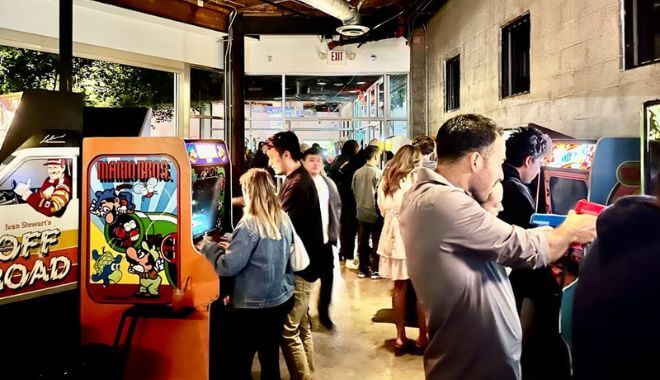
- 707 E 4th Pl, Los Angeles, CA
Users love the unique setting and vintage arcade cabinets available to play: “This place is super duper awesomeness, arcade games, full bar, music, pinball machines, and a patio.”
Why We Like It
We like “EightyTwo” because it offers a fantastic blend of nostalgia and entertainment. It’s a true hipster hangout with a concept that merges classic arcade games, pinball machines, alcohol, and lively music.
The place’s vibes and ambiance are on point, making it an ideal spot to relive our childhood memories while enjoying a drink and dancing to the tunes of a live DJ. The outdoor patio adds to the charm, providing a great space to chill.
However, it’s worth noting that the bar can get quite crowded, leading to longer wait times for drinks and limited access to popular games during peak hours. Despite these occasional drawbacks, “EightyTwo” remains a unique and fun destination that we enjoy visiting.
NeoFuns
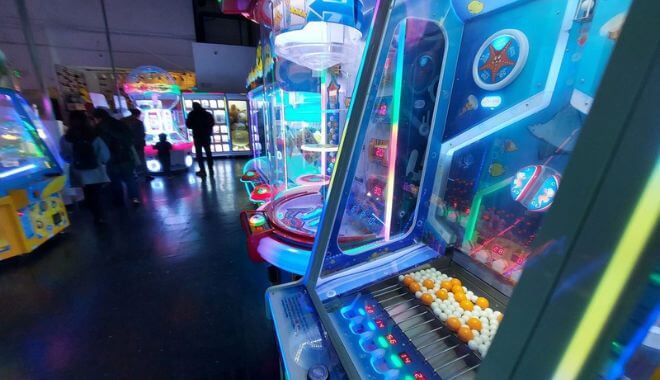
- 500 N Atlantic Blvd, Ste 162, Monterey Park, CA
People love its variety of machines, including several claw machines with tons of plush toys. This place makes Chuck E. Cheese look insultingly bad.
Game Over Pizza

- 7065 Sunset Blvd Los Angeles, CA
In the heart of Hollywood is this unique pizza parlor (serving New York-style pizza), which includes some great arcade games and retro style. It also helps that people agree that it’s some of the best pizza they’ve had in the L.A. area.
Other Sources:
https://www.oldgamehermit.com/2019/06/review-street-fighter-ii/
https://gamefaqs.gamespot.com/arcade/589548-pac-man/reviews/142403
https://www.nintendolife.com/reviews/snes/space_invaders_the_original_game
https://www.ign.com/articles/2011/06/27/donkey-kong-review
https://en.wikipedia.org/wiki/The_House_of_the_Dead_(video_game)
